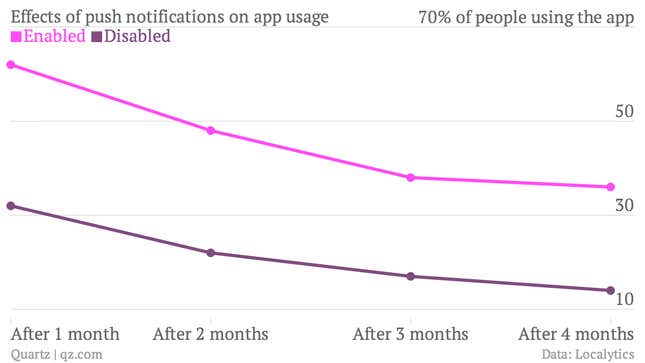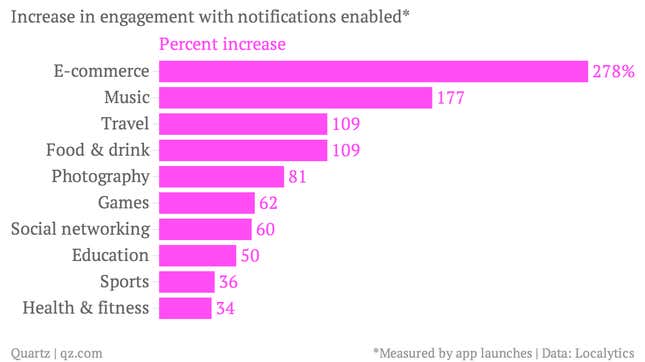It seems like every new app you download these days practically begs you to turn on notifications, or the ability to send you alerts when the app isn’t running. Sometimes these alerts are useful, as in the case of apps that tell you when a taxi has arrived or a message has been received. But there are many more apps—music, travel, games—that simply want your attention for their own benefit.
A new report from Localytics, an analytics firm, explains why. Smartphone users who turn on notifications use those applications far more often than people with alerts turned off. They are also much less likely to use an app only once before abandoning it. “On average, 62% of users will return to the app the following month if they are being engaged with push messaging, whereas only 32% of users will return if not prompted with push,” according to Localytics, which looked at more than 1.5 billion devices and 28,000 apps during the month of July.

What’s more, certain types of apps are better than others at luring users back with notifications. E-commerce apps appear to have mastered the art of persuasion, while no amount of notifications is enough to convince people to use health and fitness apps that much more regularly than they already do.

As the value of notifications becomes increasingly clear, your smartphone’s lock screen—where notifications often appear—is turning into “the most valuable property in the entire media universe,” according to one tech pundit (paywall). That is certainly what app makers seem to believe. For users, the value of constant, distracting alerts is less clear.




